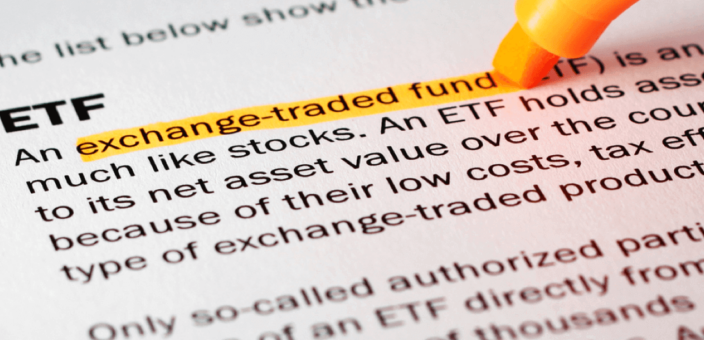The fallout is beginning. Because Kweku Adoboli, who allegedly used unauthorized and speculative trading techniques that cost UBS $2.3 billion, was an ETF trader, some people are drawing the conclusion that ETFs are dangerous.
This is a simplistic view. Just as investors should not naively embrace ETFs as a category, they should not naively reject them as a category.
“In its basic vanilla form, the ETF idea is a sensible one and very useful for investors,” writes Gillian Tett, The Financial Times’ U.S. managing editor in a column that also warns of the danger of the complex ETFs. (Registration required).
ETFs began as funds (they are technically a kind of mutual fund) that track indexes. Those index-tracking funds are often very inexpensive, and can provide the core holdings of a portfolio. The fact that ETFs can be traded throughout the day is not of concern to investors with long-term strategies.
As ETFs became more popular, the financial services industry began introducing more complicated funds. Now, you can find ETFs that track, say, alternative investment strategies and that use derivatives and debt to multiply their returns.
The North American State Securities Administrators issued an advisory not long ago in which they warned investors about exotic ETFs and identified the common, traditional ones:
Index – Seeks to mirror the performance of a specific investment index, such as the S&P 500® or the Dow Jones Industrial Average.
Commodity – Seeks to mirror the performance of a specific commodity or commodity group, such as gold or oil.
Bond – Seeks to mirror the performance of a specific bond index or product, such as U.S. Treasury or municipal bonds.
Currency – Seeks to mirror the performance of a specific currency or basket of U.S. or international currencies, such as the Euro or Yen.
Industry – Seeks to mirror the performance of a specific industry segment, such as healthcare or manufacturing.
Practically speaking, you can be reasonably sure you’re looking at a plain vanilla ETF if it tracks an underlying index that you’ve heard of. Another sign that you’re dealing with a plain vanilla ETF is that its tracking error is low. See our post on Four Keys To Choosing An ETF.
Quick – can you tell a plain vanilla ETF from one that’s not? Here’s a selection:
IWM
– iShares Russell 2000.
– This fund tracks the well-known index of small company stocks.
– Vanilla
FAZ
– Direxion Financial Bear 3X Shares
– Morningstar says this is for investors seeking leveraged exposure to the financial services industry.
– Clearly NOT plain vanilla
VTI
– Vanguard Total Stock Market ETF
– This fund tracks the entire U.S. stock market.
– Vanilla
QAI
– IQ Hedge Multi-Strategy Tracker ETF
– This fund tracks alternative investments in commodities and fixed-income securities.
– Not plain vanilla
If you don’t have time to pick the vanilla ETFs from the riskier ones, hire someone who does. But know enough to be able to tell if your advisor is doing a good job. (See 10 Signs Of A Bad Investment Advisor).
Disclosure
The opinions expressed by guest bloggers and/or blog interviewees are strictly their own and do not necessarily represent those of Wealthfront Inc. Information in this or other blogs should be used at your own risk. Past performance does not guarantee future results. Securities investments involve risk; returns in such investments vary and may involve gain or loss.
The S&P 500 (“Index”) is a product of S&P Dow Jones Indices LLC and/or its affiliates and has been licensed for use by Wealthfront.
Copyright © 2015 by S&P Dow Jones Indices LLC, a subsidiary of the McGraw-Hill Companies, Inc., and/or its affiliates. All rights reserved. Redistribution, reproduction and/or photocopying in whole or in part are prohibited Index Data Services Attachment without written permission of S&P Dow Jones Indices LLC. For more information on any of S&P Dow Jones Indices LLC’s indices please visit www.spdji.com. S&P® is a registered trademark of Standard & Poor’s Financial Services LLC and Dow Jones® is a registered trademark of Dow Jones Trademark Holdings LLC. Neither S&P Dow Jones Indices LLC, Dow Jones Trademark Holdings LLC, their affiliates nor their third party licensors make any representation or warranty, express or implied, as to the ability of any index to accurately represent the asset class or market sector that it purports to represent and neither S&P Dow Jones Indices LLC, Dow Jones Trademark Holdings LLC, their affiliates nor their third party licensors shall have any liability for any errors, omissions, or interruptions of any index or the data included therein.
About the author(s)
Journalist Elizabeth MacBride is Wealthfront's editor. Her work has appeared in Crain's New York, Advertising Age, the Washington Post and the Christian Science Monitor, among other publications. View all posts by Elizabeth MacBride



